Characteristics of sub-synchronous oscillation in grid-connected wind farm system
Yn Gong ,Qi Hung ,Dong-Sheng Ci ,Bmisile Olusol Olorunfemi
a School of Mechanical and Electrical Engineering,University of Electronic Science and Technology of China,Chengdu,611731,China
b Southwest University of Science and Technology,Mianyang,621010,China
c The College of Nuclear Technology and Automation Engineering,Chengdu University of Technology,Chengdu,610059,China
Keywords:Characteristics Classification Sub-synchronous oscillation (SSO)Typical system parameters Wind farm
ABSTRACT With the rapid development of wind power,wind turbines are accompanied by a large quantity of power electronic converters connected to the grid,causing changes in the characteristics of the power system and leading to increasingly serious sub-synchronous oscillation (SSO) problems,which urgently require the generalized classification and characterization of the emerging oscillation problems.This paper classifies and characterizes the emerging types of SSO caused by grid-connected wind turbines to address these issues.Finally,the impact of the typical system parameters changes on the oscillation pattern is analyzed in depth to provide effective support for the subsequent suppression and prevention of SSO.
1 Introduction
As the grid-connected capacity of new energy sources,such as wind power,and the usage of high-power electronic devices expanding,new energy power systems with numerous sources and sophisticated alternating current/direct current (AC/DC) systems are continuously developing.The wideband oscillation has emerged as a challenge in the new energy power system that has a multi-source,multi-transformation complicated AC/DC system as the composition structure [1,2].The oscillation stability problem of extremely centralized access is becoming a significant potential risk,particularly in the western and northern regions of China.Wideband oscillations have been seen recently all over the world,which demonstrate that the power system oscillations involving power electronics occur in a very wideband range [3,4].Furthermore,related events seriously threaten the power system’s safety and stability.
In October 2009,a line failure in the south Texas grid,USA caused the series compensation of the line linked to a doubly-fed wind farm to increase rapidly from 50% to 75% of that of the normal operation,resulting in the severe sub-synchronous resonance (SSR),which led a large number of turbines to be off-grid and caused the damage to the crowbar circuit [5].The interaction of the converter control and series compensation capacitance is the fundamental reason for this emerging sub-synchronous oscillation (SSO)phenomenon.It originates from the rising of the series complementary degree in the series complementary line,and the inductor-capacitor (L-C) oscillation of the grid is the dominant factor.
Some SSO with the frequencies ranging from 3 Hz to 10 Hz occurred in Guyuan,Hebei,China in 2012,causing a large number of doubly-fed wind turbines to be off-grid and several wind turbines to cut off owing to excessive harmonics [6,7].The participation of the control system of the doubly-fed induction generator(DFIG) converter makes the wind turbine’s impedance exhibit negative impedance characteristics at the oscillation frequency under specified operating conditions,resulting in SSO.And the control parameters of the controller on the rotor side of DFIG are critical for the negative impedance effect [8].
SSO with the frequency of 20 Hz-35 Hz occurred multiple times in the power grid of the northern wind power access area of Hami,Xinjiang,China in 2015,and the oscillating power spread in the Hami power grid,resulting in the severe shaft torsion of the thermal power units of the Garden Thermal Power Plant,which was about 300 km away,then prompting the turbine unit torsional vibration protection action to cut the machine [9,10].
The interaction between the converter controller of the wind turbine and AC grid creates an unstable mode at the sub-synchronous frequency.When the impedance of the direct-drive wind turbine shows a negative impedance characteristic at this frequency,there are L-C oscillations contributed by the system equivalent reactance and the wind turbine equivalent reactance [11,12].This oscillation frequency will further excite the turbine’s shaft torsion if it is complementary to the mechanical torsional frequency of the nearby turbine based on the power frequency,which will lead the machine to cut off.
The current classification proposed by the Institute of Electrical and Electronic Engineers (IEEE) for SSR and SSO still focuses on the case of interaction-induced oscillations of the turbine generator.There are two categories,SSR and device-dependent SSO,based on whether the turbine generator interacts with a series of complementary capacitors or other equipment [13–18].The specific classification is shown in Fig.1.The original classification is no longer applicable after the emergence of SSO phenomena involving or triggered by converter-type power sources,such as wind power.In order to update the classification of SSO in diverse forms caused by electronic converters,this work analyzes the emerging SSO type,presents a summary of the morphological features of SSO caused by two different types of wind turbines,and suggests a categorization scheme.The impact of the representative controller parameter fluctuations on the morphological traits is then investigated.

Fig.1.IEEE classification for SSR.
The rest of this article is organized as follows.The classification of the emerging types of SSO is enumerated in Section 2.The characteristics of SSO produced by the grid-connected permanent magnet synchronous generator (PMSG) and DFIG are discussed in Section 3 and Section 4,respectively.In Section 5,the influence of typical system parameters on the characteristic of oscillations is primarily explored.And Section 6 draws the conclusion.
2 Classification of emerging types of SSO
As mentioned before,we can see that emerging SSO involving renewable energy sources has the following common features:
1) The mechanism involves multiple converters,new energy-generating units,and the dynamic interaction with the conventional AC grid,HVDC,etc.,which fundamentally differs from the traditional electromechanical (low frequency) oscillation.SSR is dominated by the inertia and shaft system dynamics of rotating units.
2) The oscillation frequency is affected by grid parameters,converter parameters,and even external conditions,such as wind and light.And numerous factors can influence the oscillation form,such as more complex fluctuations and a wide range of time-varying characteristics.
The phenomena of SSO brought by the converter-type power,like wind,are summarized in this study as the suggestion for the current SSO morphological classification.
The primary reason for SSO is the negative resistance effect presented by the system components,such as the wind turbine at the sub-synchronous frequency.If the equivalent negative resistance is greater than the positive resistance of the grid,it amplifies the oscillation mode of the system equivalent L-C,leading to divergent power oscillations.Consequently,this paper classifies the emerging SSO phenomena into two major categories by whether the system components provide equivalent L-C oscillations and have the negative resistance,as shown in Fig.2.
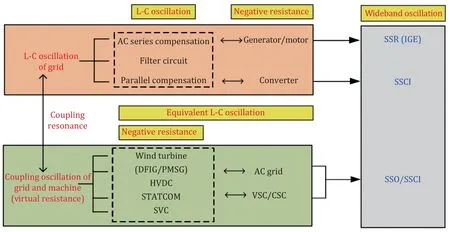
Fig.2.Classification of emerging types of SSO,where IGE is the induction generator effect,SSCI is the sub-synchronous control interaction,STATCOM is the static synchronous compensator,SVC is the static var compensator,and VSC/CSC is the voltage source converter/current source converter.
The first type originates from the electrical oscillation in the grid,where the AC series complementary grid,various filter circuits,and parallel compensation or power electronic converters can contribute to the L-C oscillation circuit.The component may show a negative resistance effect under certain operating conditions,which may cause the L-C oscillation to diverge,when the positive resistance of the grid is less than the negative resistance.The motor or converter will also change the equivalent inductance/capacitance parameters,thus changing the oscillation frequency.This type of SSO happened at the Guyuan wind farm.
The second type is produced by the power electronic converter or its interaction with the AC grid,generated by the machine-grid coupled oscillation.It can be challenging to identify the initial inherent oscillation mode from the unit or grid side,but it can be seen as a multi-converter,and at a specific frequency,the virtual impedance of the grid constitutes the negative impedance effect causing the oscillation phenomenon.For example,20 Hz-35 Hz SSR/SSO in the Hami power grid was generated by the direct-driven wind turbine and the weak AC grid.The impedance of PMSG at sub/super-synchronous frequencies exhibits the negative resistance and capacitive resistance characteristics.And when the negative equivalent resistance of the wind farm exceeds the positive resistance of the grid,it will excite an electrical oscillation at the frequencies determined by the system equivalent reactance and wind turbine equivalent capacitance.This is machine-grid coupled type SSR/SSO.
The two types of oscillations can coexist,and in specific cases,when the frequencies of the two types of oscillations are close to each other (or complementary),even more,risky resonance phenomena can occur.For example,when the torsional frequency of the thermal power units and the electrical oscillation frequency are almost complementary,it will result in serious resonance dispersion phenomena.Sometimes,one type of oscillations is dominant and the other is complementary.These two types of oscillations interact with each other,creating more complex situations.Typical scenarios of coexistence multiform SSR/SSO include:
1) The first scenario is the coexistence and interaction of grid L-C oscillations and turbine unit torsional oscillations.When the electrical resonance frequencies of L-C and the turbine unit shaft system coincide during the transmission of power,this is the case for typical SSR.The fundamental element of SSR is the serious resonance phenomenon that would occur when the electrical resonant frequencies of L-C and the turbine unit shaft system are almost complementary.
2) The second scenario is the coexistence and interaction of polymorphic SSR/SSO in the wind-fire bundled DC outfeed system.The aforementioned situation in the Hami grid is such a case.The machine-grid coupled oscillations of the direct-driven wind turbine and the weak grid can excite the torsional vibration of the turbine unit under certain conditions,while at the same time,the HVDC control action may lead to the amplification of the low-order torsional vibration mode of the turbine unit.They are intertwined and affect each other,constituting a very complex scenario.
3 Characteristics of grid-connected SSO of PMSG
Fig.3 depicts a simple PMSG-based wind farm connected to a weak AC grid through transmission lines.To study SSO between PMSG and the weak AC grid,the rated power of adopted PMSG is set as 2 MW.PMSG is connected to the corresponding AC grid by a transformer,and all PMSGs operate under the same operating conditions with the same control parameters.

Fig.3.PMSG-based wind farm connected to a weak AC system.
PMSG and its operating and control parameters are shown in Table 1.The system simulation time is set as 10 s.The external circuit condition is changed at 0.7 s to excite system SSO,and the A-phase current waveform at the network is shown in Fig.4.

Table 1 Operating and control parameters of PMSG simulation case.

Fig.4.A-phase current waveform of PMSG-connected SSO: (a) A-phase current waveform (0.5 s-10 s) and (b) partial enlargement of A-phase current waveform (0.5 s-1.5 s).
From the oscillation current waveform in Fig.4,SSO has a distinct starting process.According to the aforementioned analysis,the system as a whole shows the negative damping effect at this time,and the oscillation should continue to disperse according to the decay coefficient.But due to the limiting effect of the converter controller,the system enters the continuous equal-amplitude oscillation phase,when the peak oscillation current reaches the preset limiting value.Later,SSO can be weakened and gradually decayed by other means,such as adjusting the control parameters.In the continuous oscillation phase of the system,the current amplitude of each point of the grid remains constant,but the power amplitude of each point is different,indicating that the sub-synchronous power amplitude of each point in the system is different.
The results of the spectral analysis of the A-phase current are shown in Fig.5.The frequency of the simulated SSO is 24.6 Hz,and it also has a super-synchronous component with a frequency of 75.4 Hz.Generally speaking,the torsional vibration frequency of a thermal power unit is in the range of 10 Hz-35 Hz.The excitation of the thermal power unit torsional vibration requires the presence of frequency components in the system that are close to or complementary to the torsional vibration frequency based on the working frequency.And the sub-synchronous frequency band basically covers this frequency range,so when there is a sub-synchronous frequency in the system,it is easy to cause the torsional vibration of thermal power units.
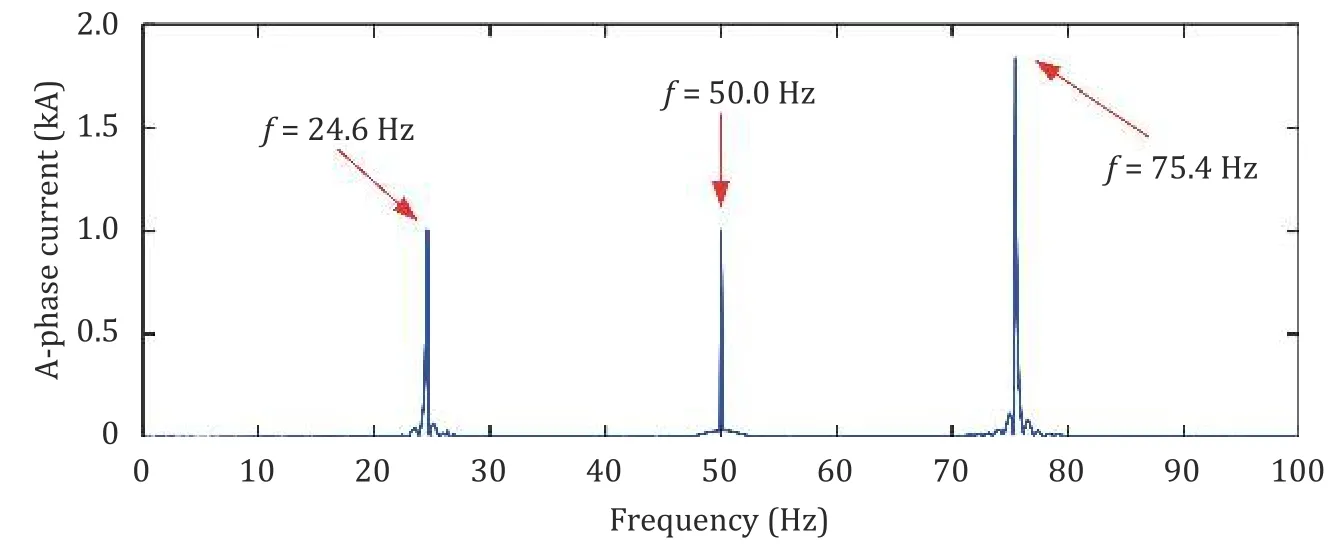
Fig.5.Spectral analysis of the A-phase current of PMSG.
4 Characteristics of grid-connected SSO of DFIG
In this section,a system model of a doubly-fed wind farm connected to the grid via a series of complementary lines is built,as shown in Fig.6.The induction motor uses the standard 6th-order model,the axis system uses a dual mass block model,and the grid-side converter adds a filter to eliminate the effect of the switching frequency distortion on the system.

Fig.6.Equivalent circuit diagram of DFIG via the series complementary grid connection.
The operating and control parameters of DFIG are shown in Table 2.In this simulation case,the series compensation increases att=5 s to excite the system’s SSO.
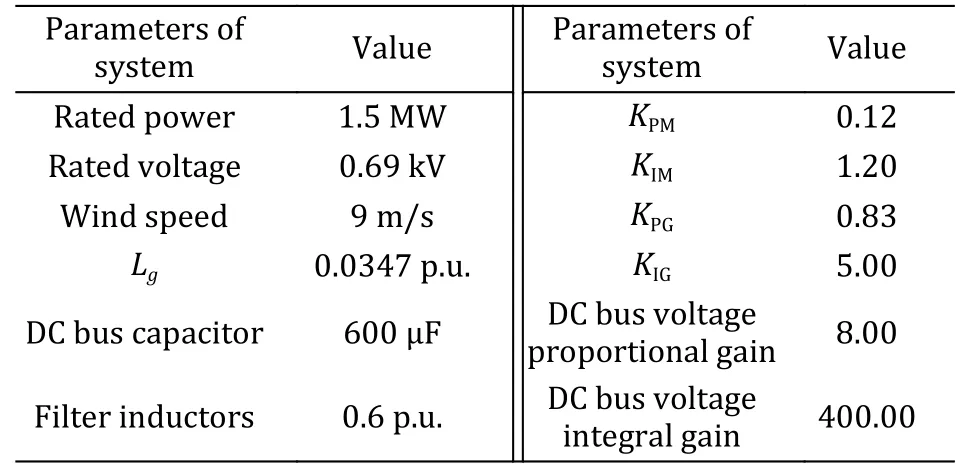
Table 2 Operating and control parameters of DFIG simulation case.
The A-phase current waveform in the system and the spectrum analysis results are shown in Fig.7.Similar to PMSG,DFIG with grid-connected SSO has an oscillation dispersion process and ends up with equal-amplitude oscillations without suppression owing to the controller limitation.

Fig.7.A-phase current waveform of DFIG-connected SSO: (a) A-phase current waveform (2 s-10 s) and (b) partial enlargement of A-phase current waveform (8.5 s-9.5 s).
The spectral analysis results of the A-phase current are shown in Fig.8,and the frequency of simulated SSO is 8.3 Hz.In this SSO case,the L-C electrical oscillations of the line inductor and the series complementary device in the grid are the dominant sources of SSR,and the converter control of DFIG amplifies this oscillation mode (the negative resistance effect),thus causing a dispersive power oscillation,which eventually enters a continuous oscillation phase due to the limiting effect of the controller.
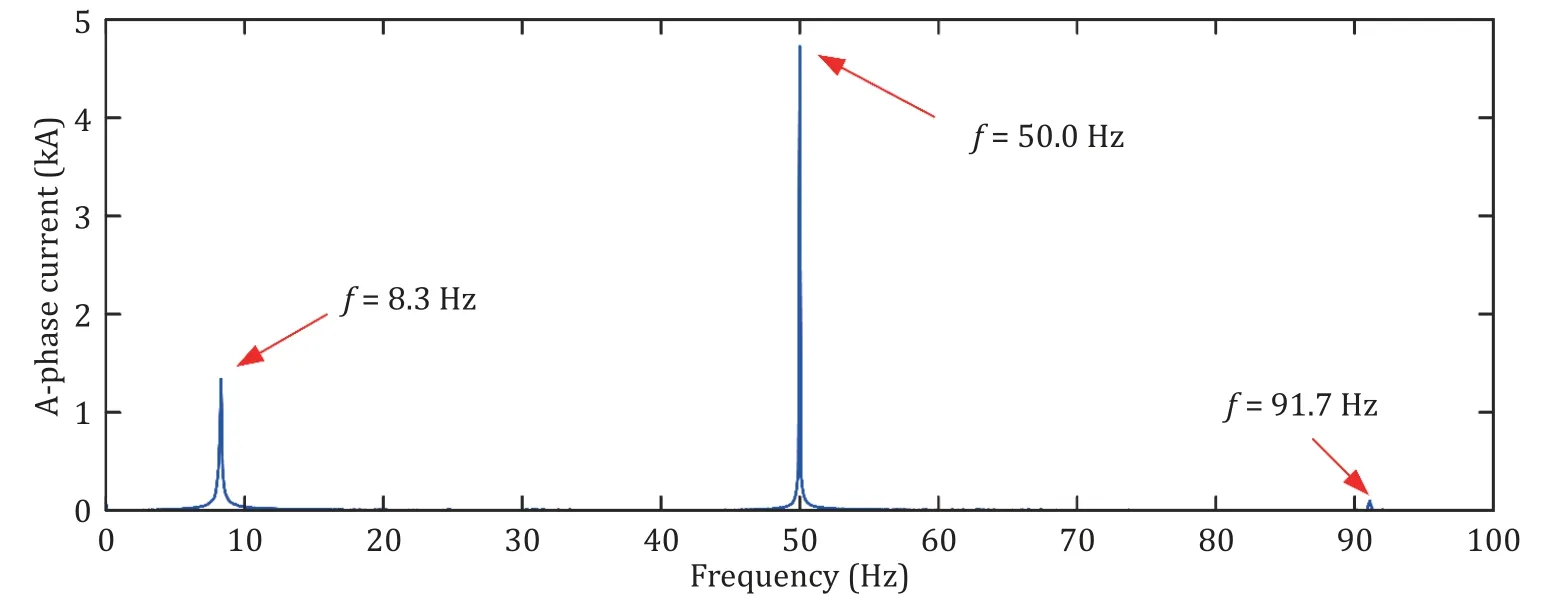
Fig.8.Spectral analysis of the A-phase current of DFIG.
5 Influence of system parameters on the characteristics of SSO
The selection of parameters is determined mostly by two factors: The system’s external condition and the wind turbine’s impedance characteristics.The stator winding of DFIG is usually regarded as being directly connected to the grid,while the rotor winding is connected to the grid via an AC/DC converter made up of two voltage pulse width modulation (PWM) converters that are positioned back-to-back.The wind speed directly determines the output of the wind turbine from the external environment conditions;the strength of the connected grid is determined by the transmission line directly connected to the rotor;the wind speed and series compensation are the significant influence factors of SSO.The stator side is connected to the grid through the converter,so the impedance of DFIG can be changed by changing the converter’s control parameters.The turbine’s impedance directly affects oscillations,and the control parameters of DFIG are also the significant factors affecting SSO.
Therefore,the line series complementary degree,wind speed,MSC current inner loop parameters,and GSC current inner loop parameters are chosen as the object parameters under study when examining the impact of system parameters on the characteristics of SSO.
To further investigate the effect of system parameters on SSO,a 100-MW wind farm consisting of 66 DFIGs with the standard power of 1.5 MW is built and connected to the equivalent AC grid via a series complementary line.The system parameters are used to analyze the influence of the system parameters on the SSO patterns by making the string complement degree rise rapidly for 15% at the time point of 2 s.To observe the SSO phenomenon more significantly while saving simulation time,an additional device is added to suppress the oscillation,so that the excited SSO events can be suppressed in a very short time.
5.1 Compensation level
From the aforementioned SSO event that occurred in Guyuan,it is clear that the compensation level has important influence on whether the system oscillates or not.The purpose of this subsection is to investigate the influence of the series complementary degree on the characteristics of the oscillation pattern.The gradient of the increased series complementary degree at 2 s is set as 40%,50%,and 60%,respectively,to ensure the occurrence of SSO in the system.And the output active power is shown in Fig.9.The amplitude of SSO increases,but the oscillation frequency decreases with the increase in the series complementary degree.
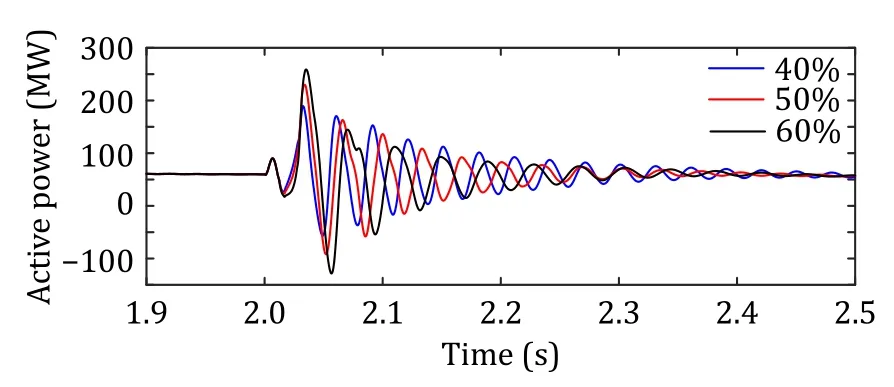
Fig.9.Active power waveform of the wind farm when the compensation level increases.
5.2 Wind speed
In this subsection,the effect of the wind speed on the morphological characteristics of the oscillation is studied;the increasing crosstalk degree at 2 s is fixed as 60% to excite the occurrence of SSO;the initial wind speed of the turbine is set as 7 m/s,9 m/s,and 11 m/s,respectively.The output active power waveform at the parallel point of the system is shown in Fig.10.The amplitude of the SSO active power increases as the wind speed increases,but the oscillation frequency remains basically constant.

Fig.10.Active power waveform of the wind farm when the wind speed increases.
5.3 MSC current inner loop parameters
This subsection explores the effect of the MSC current inner loop parameters on the characteristics of the oscillation pattern,which areKPMandKIM.All of the series complementary degrees added in the subsequent simulation are fixed at 60%,and the initial wind speed of the fan is set as 9 m/s.The output active power waveform at the parallel point of the system is shown in Fig.11.With the increase inKPM,the amplitude of SSO increases,and the oscillation frequency remains basically the same;with the increase inKIM,the amplitude of SSO decreases,and the oscillation frequency decreases,too.

Fig.11.Active power waveform of wind farm when the MSC current inner loop parameters increase: (a) KPM and (b) KIM.
5.4 GSC current inner loop parameters
This subsection explores the influence of the GSC current inner loop parameters (KPGandKIG) on the oscillation pattern characteristics.The output active power waveform at the parallel point of the system is shown in Fig.12.The amplitude and frequency of SSO remain the same whenKPGandKIGincrease.Thus,the GSC parameters of DFIG have no significant effects on the characteristics of SSO.

Fig.12.Active power waveform of the wind farm when the GSC current inner loop parameters increase: (a) KPG and(b) KIG.
In summary,the influence of increased system parameters of the system on the characteristics of SSO can be summarized as Table 3.

Table 3 Effect of increased parameters on oscillations in the grid-connected DFIG wind farm.
5.5 Effect of increased parameters on oscillations in grid-connected PMSG wind farm
Similar to the grid-connected system of the DFIG wind farm,the connection reactance,wind speed,number of turbines,MSC parameters,and GSC parameters are selected for the PMSG wind farm.When the parameters are increased,the results of the changes in the oscillation-related morphological characteristics are shown in Table 4.

Table 4 Effect of increased parameters on oscillations in the grid-connected PMSG wind farm.
6 Conclusions
This paper classifies SSO triggered by the involvement of new power electronic converters according to whether the system components provide equivalent L-C oscillations at sub-synchronous frequencies and whether they exhibit negative impedance effects.The characteristics of SSO generated by direct-driven wind turbines and doubly-fed wind turbines connected to the grid are summarized,respectively.Finally,the effects of changes in the parameters of each system on the morphological characteristics of SSO are analyzed in depth to provide effective support for the subsequent suppression and prevention of SSO.
Funding
This work was supported in part by National Key Research and Development Program of China under Grant No.2017YFB0902002.
Declaration of competing interest
The authors declare no conflicts of interest.
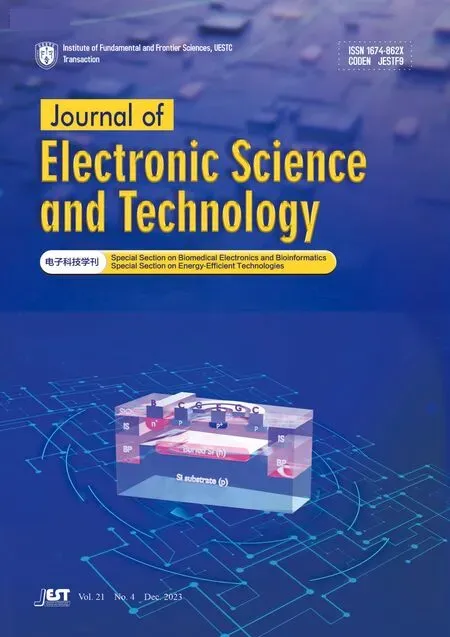 Journal of Electronic Science and Technology2023年4期
Journal of Electronic Science and Technology2023年4期
- Journal of Electronic Science and Technology的其它文章
- Developing microwave-induced thermoacoustic tomography: System,application,and reconstruction
- Life-cycle assessment of batteries for peak demand reduction
- Low working loss Si/4H-SiC heterojunction MOSFET with analysis of the gate-controlled tunneling effect
- High-sensitivity phase imaging eddy current magneto-optical system for carbon fiber reinforced polymers detection
- Algorithms for automatic measurement of SIS-type hysteretic underdamped Josephson junction’s parameters by current-voltage characteristics
- Boundedness and liveness enforcement for labeled Petri nets using transition priority
